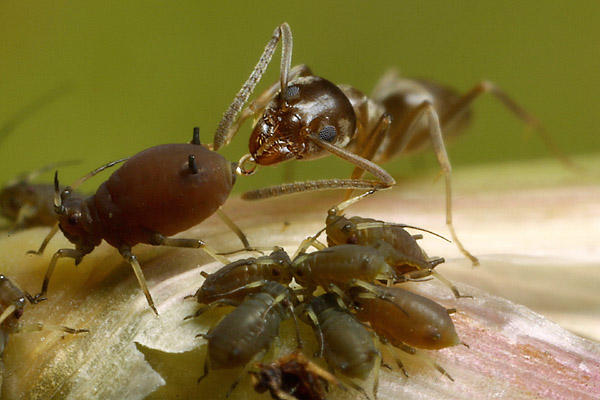
 17
17





Like my shiny badges? Want your own? Check out Skills to Inherit Property!
 14
14




 15
15







Invasive plants are Earth's way of insisting we notice her medicines. Stephen Herrod Buhner
Everyone learns what works by learning what doesn't work. Stephen Herrod Buhner
 9
9




(Reminder to myself) God didn't say, "well said, well planned, and well thought out." He said, "well done."
Nikki's Wishlist
 13
13




![Filename: LADYBIRDLARVAE.jpg
Description: [Thumbnail for LADYBIRDLARVAE.jpg]](/t/139109/a/105477/LADYBIRDLARVAE.jpg)
Creating edible biodiversity and embracing everlasting abundance.
 15
15




Cultivate abundance for people, plants and wildlife - Growing with Nature



 8
8




 10
10




 7
7




Tomorrow's another day...

 15
15




Be joyful, though you have considered all the facts. ~Wendell Berry
 10
10




 4
4




Hugo Morvan wrote:Worm excrements contain chitinase, plants absorb this through their roots and can use it to fend off insects. Chitinase weakens their exoskeleton, so they prefer to move on to another food source. Create a worm friendly environment !
 6
6




"Truth is stranger than fiction." Samuel Clemens aka Mark Twain
See my skoolie at https://www.word-speller.com/honaly & Kids learning to spell English will like this dictionary at https://www.word-speller.com
 2
2




Blazing trails in disabled homesteading
 2
2




Ash Jackson wrote: I think he called them a "brachted wasp," but googling was not much help.
He said, "plant the Alyssum next to your cabbages, and you'll have fewer aphids."
 9
9




“We can complain because rose bushes have thorns, or rejoice because thorn bushes have roses.” — Abraham Lincoln
 6
6




 10
10




Like my shiny badges? Want your own? Check out Skills to Inherit Property!
 4
4




Ashley Cottonwood wrote:Hey Mathew that's a great question!
This brainstorming thread is to help develop the PEP program aka "Permaculture Education according to Paul"
So really I'm trying to reiterate someone else's perspective, you can look up Paul's work, but here is my brief summary in relation to aphids:
In this permaculture perspective, you are trying to identify if there is an imbalance in the system that you are managing. As many people have stated above, they have identified that there wasn't necessarily a in imbalance in the system, but rather an individual weak plant and 'doing nothing' was the solution. That the aphids weren't a problem but a functioning part of the system as a whole.
In other situations it may have been a soil health issue or a lack of habitat for beneficial. In these cases, putting in effort to mitigate the problem results in a long term impact on the system. Sort of a "one and done" solution, although you'd have to continue to make observations to see if your inputs were effective.
What this thread was trying to avoid was mitigating a problem by having to repeated apply an input: DE, sprays, squishing. This is because they are seen as a band-aid solution and not addressing the imbalance as a whole.
In short, aiming towards "wholistic management".
Hopefully that makes sense!
Blazing trails in disabled homesteading
 6
6




Like my shiny badges? Want your own? Check out Skills to Inherit Property!
 4
4




 9
9




 10
10




 7
7




paul wheaton wrote:Point 1: when squishing aphids, use your thumb. That way, you can hold your thumb up for everybody to see and say "see! I have a green thumb!"
paul wheaton wrote:I think an important part of aphid control is ant control. A lot of times, the ladybugs cannot get to the aphids as long as there are ants. So the ant issue needs to be mitigated.
Blazing trails in disabled homesteading
 11
11




The wishbone never could replace the backbone.

 5
5




Hans Albert Quistorff, LMT projects on permies Hans Massage Qberry Farm magnet therapy gmail hquistorff
 5
5





 6
6




 2
2




 6
6











 4
4




Hans Albert Quistorff, LMT projects on permies Hans Massage Qberry Farm magnet therapy gmail hquistorff
 1
1




 2
2




The best way to predict the future is to create it yourself.
My Book, Quality Agriculture, is available now.











 8
8




Melding permaculture, homesteading, bau-biologie, holistic oncology nutrition and functional medicine since 1997. https://nutritional-solutions.me/onco.
 7
7




Weeds are just plants with enough surplus will to live to withstand normal levels of gardening!--Alexandra Petri
 4
4











 4
4




Interestingly, he has observed that the presence of aphids without gap until the autumn has led to aphid predators eating the asian fruit fly drosophila suzukii, which is a recent arrival in Europe with a big impact on cherry, grape, and soft fruit.
Hans Albert Quistorff, LMT projects on permies Hans Massage Qberry Farm magnet therapy gmail hquistorff
 2
2




 5
5















 5
5





|
Everyone is a villain in someone else's story. Especially this devious tiny ad:
The new permaculture playing cards kickstarter is now live!
https://www.kickstarter.com/projects/paulwheaton/garden-cards
|









